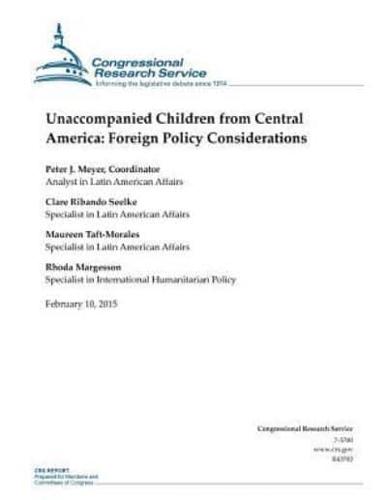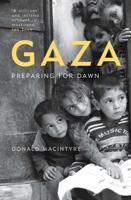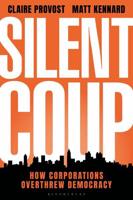Publisher's Synopsis
In FY2014, there was a sharp increase in the number of unaccompanied alien children (UAC) traveling to the United States. U.S. authorities apprehended more than 68,500 unaccompanied minors at the U.S. border in FY2014, 75% of whom came from El Salvador, Guatemala, and Honduras-the "northern triangle" of Central America. This unexpected surge of children strained U.S. government resources and created a complex crisis with humanitarian implications for the United States and the international community. Although the flow of unaccompanied minors has slowed since peaking in June 2014, experts warn that it will likely accelerate again in the future unless policy makers in the countries of origin and the international community take steps to address the poor socioeconomic and security conditions driving Central Americans to leave their homes. The 2014 crisis led to renewed focus on Central America, a region with which the United States historically has shared close political, economic, and cultural ties. The United States currently engages with Central American countries through a variety of mechanisms, including the Dominican Republic-Central America-United States Free Trade Agreement (CAFTA-DR) and several foreign assistance programs. Over the past year, the Obama Administration has sought closer cooperation with Central American governments to dissuade children from making the journey to the United States, target smuggling networks, and repatriate unauthorized migrants. Asserting that the FY2014 surge in unaccompanied minors was a reminder that "the security and prosperity of Central America are inextricably linked to our own," the Administration has requested $1 billion in foreign assistance for the region in FY2016. These funds would be used to implement a new "U.S. Strategy for Engagement in Central America," a whole-of-government approach designed to increase economic opportunity, reduce extreme violence, and strengthen the effectiveness of state institutions in Central America. The request would allow existing programs to be scaled up significantly and would place greater emphasis on economic prosperity and governance while continuing to address security concerns in the region. The 113th Congress expressed considerable concern about the spike in apprehensions of unaccompanied children from Central America, with Members holding numerous hearings, traveling to the region, and introducing legislation. Although Congress opted not to appropriate supplemental funding for programs in Central America in FY2014, it included additional resources for the region in its FY2015 appropriations measure (P.L. 113-235). Congress also directed the Administration to develop a comprehensive strategy to address the key factors contributing to the migration of unaccompanied children to the United States. The 114th Congress will continue to shape U.S. policy toward Central America. It will consider the Administration's $1 billion FY2016 request for the region and will review the strategy required by P.L. 113-235. Congress also may consider other measures, such as H.R. 439 (Weber) and H.R. 530 (Burgess), which, respectively, would suspend and reduce foreign assistance to El Salvador, Guatemala, Honduras, and Mexico if those countries proved unwilling or unable to prevent unauthorized migration to the United States.










